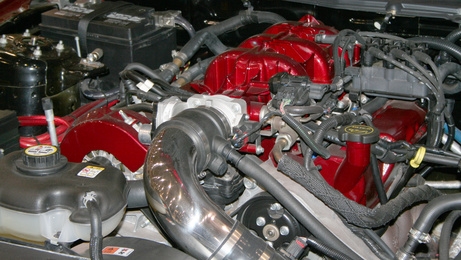
The 1999 Nissan Sentra was equipped with the option of a 1.6-liter, in-line, 4-cylinder engine, or a 2.0-liter, dual overhead cam, in-line 4-cylinder. Checking the EGR on either engine is almost an identical project, with the variable being part location. On the 1.6-liter Sentra engine, the EGR valve is located in the back of the engine, just behind the valve cover. On the 2.0-liter engine, the EGR valve is located on the front of the engine, just in front of the valve cover. The letters E-G-R stand for Exhaust Gas Recirculation, which is to say that the valve recycles unburnt fuel back into the combustion cycle of your engine.
Open the hood of the Sentra. Visually inspect the identification sticker on the underside of the hood. There is a white sticker that gives the vehicle engine information. Read the sticker to determine if you have a 2.0-liter engine or a 1.6-liter engine. The position of the EGR valve depends upon the type of engine, as previously stated.
Remove the electrical connectors to the EGR valve by hand. Remove the EGR mounting bolts from the head of the engine, using a 3/8-inch drive ratchet and socket. Turn the bolts counterclockwise until they can be removed from the engine by hand. Do not pull on the EGR valve itself or you could crack the EGR tube, which would require replacement of the catalytic converter that it is welded onto.
Place an open end wrench on the base neck of the EGR vavle. Place a second open end wrench on the top of the air tube, where it enters the EGR valve. Hold the air tube perfectly still, while turning the EGR valve body counterclockwise with the open end wrench. The EGR valve is threaded onto the air tube much like a household gas pipe or water pipe. Turn the EGR with the open end wrench until it can be removed from the air tube by hand.
Turn the EGR valve upside down, so that you can visually inspect the inside of the valve body. There is going to be some carbon buildup (black soot) on the inside of the valve body, but there should not be large masses or clumps of buildup. If there is a large quantity of carbon buildup in the EGR, or you can see no sign of bare or shiny metal, then the EGR needs cleaned or replaced. Check with your local auto parts store on chemicals that are used to clean EGR valves.